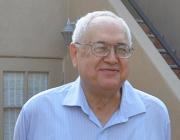Abstract:
Unique reactions occurring at the interface between air and aqueous solutions are increasingly recognized to be of potential importance in atmospheric processes. Sulfur dioxide was one of the first species for which experimental evidence for the existence of a surface complex was obtained by several different groups, based on the kinetics of SO2 uptake into aqueous solutions, large decreases in surface tension and second harmonic generation spectroscopic studies. The uptake has been proposed to involve an uncharged surface complex which subsequently converts into ionic species. We report here the results of a search for an uncharged SO2 complex at or near the surface using attenuated total reflectance Fourier transform infrared spectrometry (ATR-FTIR) at 298 K guided by ab initio calculations of a 1:1 SO2-H2O complex. No infrared absorption bands attributable to such a complex of SO2 were observed experimentally in the expected region, giving an upper bound of 4 x 10(14) SO2 cm(-2) to the concentration of neutral SO2 molecules weakly sorbed to the surface in equilibrium with similar to1 atm SO2(g). The implications for the nature of the surface species and previous observations are discussed.
